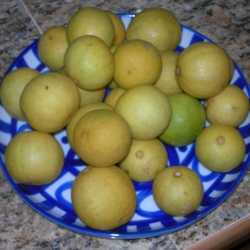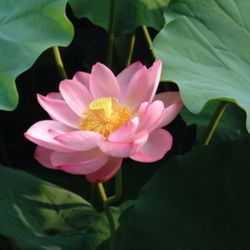Careful observation and the use of keys and guides can unlock the mysteries of the barren winter forest.
Equip yourself for a tree ID hike with a pocket-sized reference or two. Add a small magnifying glass, a pocketknife, a camera, and a way to take notes. This tool kit should enable you to collect the clues you'll need to "name that tree."
Look, really look, at some bare hardwoods. Without leaves in the way, you'll start to see the differences in bark, twigs and more. The smallest parts, the twigs, can be the most telling. Twigs show many of the highly individual features that are used to differentiate between species. Twig keys are generally the reference needed in winter, when a leaf key is of no help. Beyond the twigs, though, take note the bark and any remnants of fruit or seeds. Consider the overall look of the tree, its local site conditions, and whether it appears naturally occurring or has been planted.
Keys and field guides
"Keys" are written for many types of living things. A diagnostic key looks something like an outline, with major headings and numbered subcategories. To use a key, you start by choosing one of two descriptives in the first heading. Your choice eliminates some of the possibilities, and leads you either to another choice, or to an answer. If you choose correctly, you eventually arrive at the name of the item in question.
Most tree keys are written for trees with leaves ON. On your winter walk, you'll need a "twig key." Choose a key that is designed for your intended use. For a woodland hike, find a key to native species, written for your area (or reasonably close by.). For landscape species, choose a key designed for ornamental species. The table below lists recommended printed materials and online keys. Don't forget your "smart" device, if you have one; there may be "an app for " this, or you may be able to access an online key in the forest.
References containing "keys"Woody Plants in Winter by Earl L. Core and Nelle P. Ammons*Vegetative Keys to Common Ornamental Woody Plants by Ralph W. Curtis et al*The Tree Identification Book by George SymondsThe Winter Tree Finder by May T. Watts Manual of Trees of North America by Charles S. Sargent*Winter Botany by William Trelease*Trees and Shrubs in Eastern North America* by Bemjamin Blackburn*Manual of Cultivated Plants by L. H. Bailey* |
Online twig keysVTree ID Twig Key, Virginia Tech, designed for all states, http://dendro.cnre.vt.edu/DENDROLOGY/syllabus/twigkey/key1.cfmWinter Twig Identification Key, Burke Museum of Natural History and Culture, designed for Washington State, http://biology.burke.washington.edu/herbarium/imagecollection.php?Page=wintertwigkey.phpKey to Winter Twigs by Paul H. Davison, PhD, University of Alabama, designed for use in north Alabama, http://www.una.edu/faculty/pgdavison/Twig%20Key.htm U. P. Tree Identification Key, Michigan State Extension,designed for trees of the Michigan Upper Peninsula, http://uptreeid.com/key3.htm |
Field guides are generally designed for summer use. Use field guides to familiarize yourself with trees you might see, and to read a more complete description of a tree species you consider a likely candidate. Most field guides provide additional description: bark pictures, branch sketches, summer twig drawings or pictures, or notes. These can help comfirm or rule out a particular species for a tree in question.
Learn the terms
You need to know the names of some plant parts to use a key or field guide. Many small details on a tree twig are actually features found only on certain species. Fortunately, key and guide writers understand that users may need help. Keys, field guides, and reference books often have glossaries or sketches of key plant parts that you will use in identification. Here in Dave's Garden, the Garden Terms (Gardenology) knowledge base contains such definitions. Reference books about trees may or may not contain identification help. Those geared to gardening rarely do.Get some help
Using a key will be easier if you have an experienced user to mentor you. Look for guided walks offered at parks or wildife preservation areas. Even a birdwatching walk may connect you with others who have some knowledge of trees species along the route. Lacking a live companion to help nail those IDs, you can digitally bring a tree to Dave's Garden. Take clearly focused pictures of your tree in question. Include a closeup of a twig several inches long, and one the tree's trunk, for starters. Post your question and pictures in the Plant Identification forum. While you wait for an answer, start browsing other threads. Reading current and previous ID queries is one way to practice looking for key features on an unknown plant.
Identifying bare deciduous trees seems challenging at first glance. With the right tools and practice, an amateur can expand his or her knowledge of the winter woodland. Start by keying the "gimmes"; trees you already know from your experience in other seasons. And be aware that trees of some genera can hybridize in the wild. A true species ID might be tricky or unnecessary for your casual purposes.
~~~<@ ~~~<@ ~~~<@ ~~~<@ ~~~<@ ~~~<@
Resources
Try Garden Bookworm for reviews of the above printed references. Highlighted titles are already linked to reviews or a source.
Nix, Steve, "A Beginning Guide to Winter Tree Identification," http://forestry.about.com/od/treeidentification/a/winter_tree_id.htm accessed 12-28-2011
Winter Trees and Shrubs ( a photographic guide) http://www.portraitoftheearth.com/trees/trees.html accessed 1-3-2012
Perhaps you'll avoid the "Winter Blues" (Kathleen Tenpas) when you work on tree IDs.

















